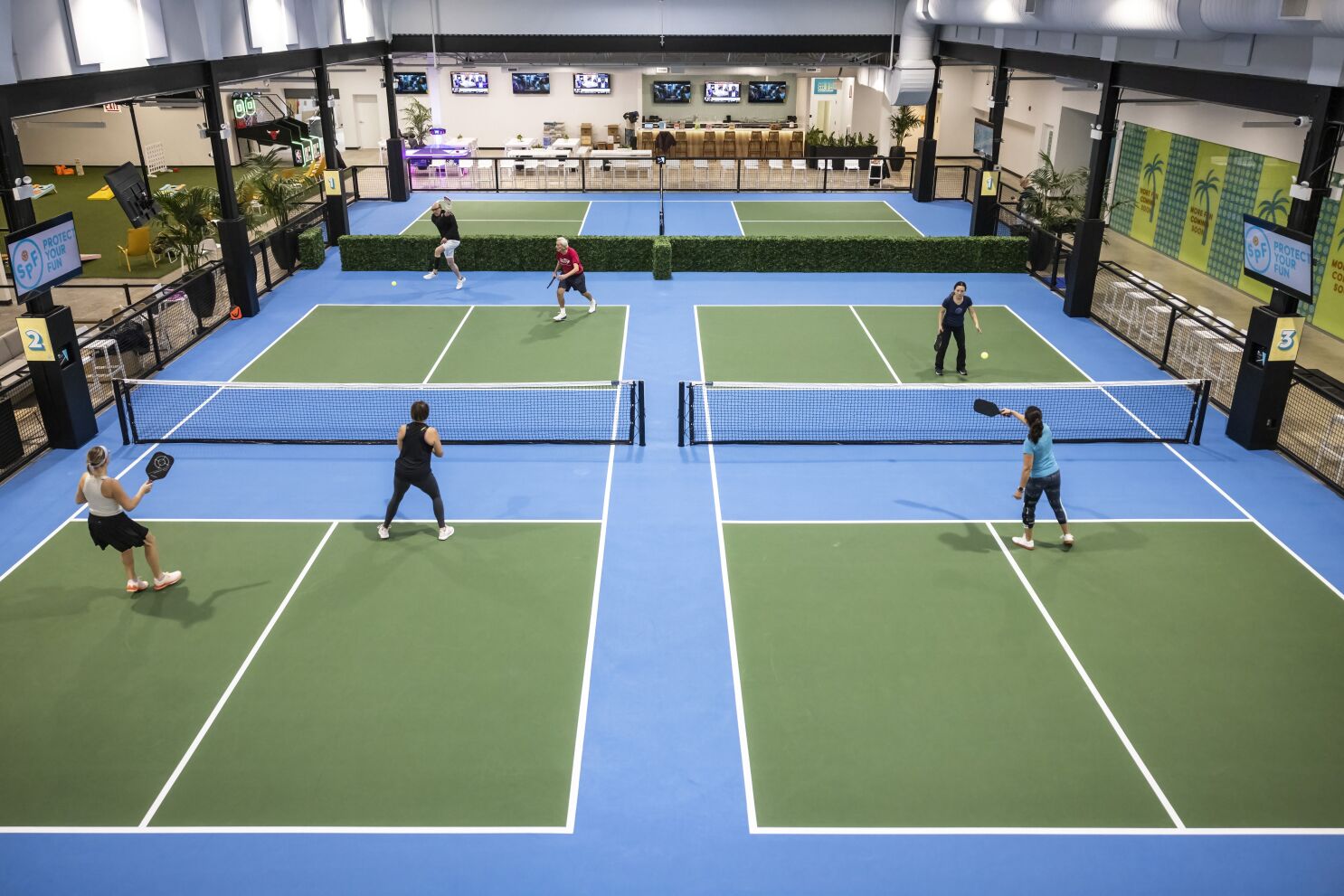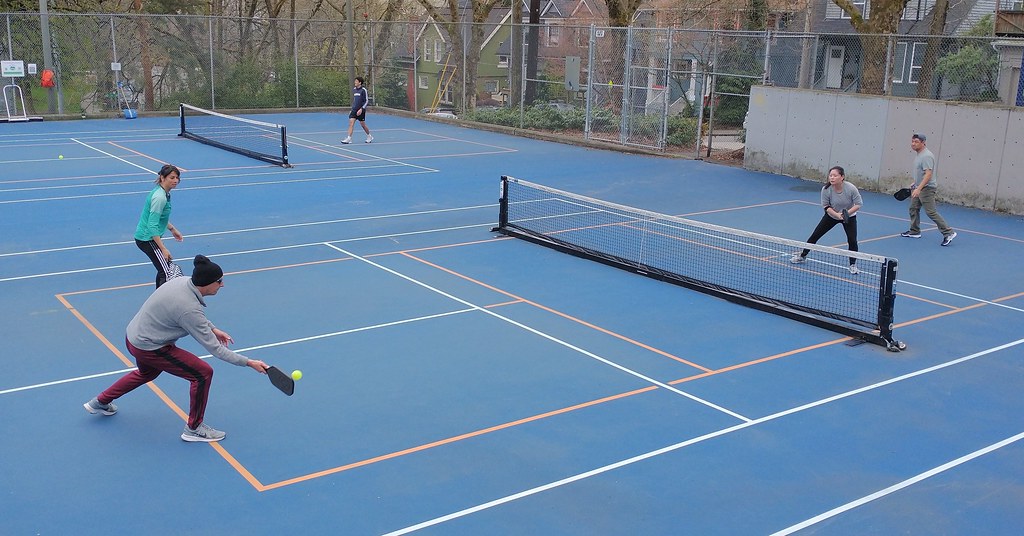Step-by-Step Instructions for Setting Up a Backyard Pickleball Court in Any Size Space
Step-by-Step Instructions for Setting Up a Backyard Pickleball Court in Any Size Space
Blog Article
Checking Out the Different Options for Backyard Pickleball Judiciaries: A Homeowner's Guide to Installment and Upkeep
As the appeal of pickleball proceeds to rise, numerous property owners are considering the setup of a committed court in their yards. This task calls for mindful evaluation of various elements, such as the offered area, appropriate surface materials, and ongoing maintenance needs. Comprehending these aspects is important for producing a practical and satisfying having fun atmosphere. Nevertheless, the journey from conception to implementation can be intricate, prompting the need for a comprehensive guide that addresses both installation and upkeep approaches. What are the best techniques to ensure your court remains pristine and useful in time?
Evaluating Your Area
When considering the enhancement of a pickleball court to your backyard, exactly how can you efficiently analyze the offered space? The initial step is to gauge the dimensions of your lawn, ensuring that you have adequate area for a regulation-sized court, which measures 20 feet by 44 feet for increases play (backyard pickleball court). It's important to account for extra room surrounding the court to promote movement and improve gameplay, commonly recommending an additional 10 feet on each side
Following, evaluate the terrain of your yard. A degree surface area is perfect for a pickleball court, as unequal ground can lead to safety risks and impact gameplay. Consider exactly how these components will certainly influence your court's location and usability. if your lawn slopes or has obstructions such as trees or landscaping features.
Choosing Court Surfaces
Selecting the ideal surface area for your yard pickleball court is critical for enhancing performance and gamer security. The option of court surface area not only influences gameplay however likewise impacts the resilience and maintenance of the court.
Asphalt and concrete provide a hard, durable surface area that can tear and endure the wear of regular play. To minimize this, many homeowners decide for cushioned surfaces or specialized layers that use some degree of shock absorption.
Additionally, modular sports floor tiles are a significantly preferred choice. These floor tiles are created specifically for pickleball and deal exceptional traction, water drainage, and shock absorption. They can also be mounted over existing surfaces, making them a functional option for numerous yards.
When selecting a surface area, think about factors such as environment, budget, and desired level of play. An appropriate court surface will certainly improve your having fun experience while making sure safety and durability for your yard pickleball court. Making an informed choice is crucial for taking full advantage of enjoyment and performance.
Installment Process Summary
Mounting a backyard pickleball court typically entails numerous crucial actions that make sure both performance and durability. The very first step is to select a proper area in your yard, considering variables such as sunlight, drainage, and distance to your home. Once the site is selected, clear the area of any type of plants, rocks, or debris to produce a degree structure.
Following, lay out the measurements of the court, which need to be 20 feet broad by 44 feet long for a typical pickleball court (backyard pickleball court). After noting the borders, dig deep into the location to a deepness of around 4 to 6 inches, guaranteeing proper drain. This excavation will allow for a stable sub-base
Following this, install a base layer of crushed rock or smashed stone to advertise drain and security. Portable this layer thoroughly prior to continuing. After the base is established, you can put a concrete slab or install your chosen court surface area products, guaranteeing they follow the dimensions.
Upkeep Tips and Strategies
To make certain the long life and efficiency of your backyard pickleball court, regular upkeep is important. Beginning by consistently evaluating the surface area for fractures, debris, and any kind of indicators of wear. Without delay attend to any problems to avoid further wear and tear. Utilize a mop or leaf blower to keep the court tidy, removing fallen leaves, dirt, and other particles that can affect gameplay.

Furthermore, check your court's drainage to avoid water merging, which can result in surface damages gradually. Ensure that the surrounding landscape routes water away from the court. Take into consideration securing the surface area every few years to enhance longevity. if your court is made of asphalt or concrete.
Last but not least, establish a routine schedule for upkeep tasks, consisting of seasonal checks and fixings, to keep your court in optimal condition and ready for play. Normal upkeep not just enhances efficiency but also prolongs the life of your yard pickleball court.
Expense Considerations and Budgeting
When preparing for a backyard pickleball court, comprehending the various price factors to consider is vital for reliable budgeting. The complete expense can vary significantly based on variables such as court dimension, surface area product, and setup intricacy.
First costs description typically consist of site preparation, which may include grading and leveling the land, followed by the selection of surface area-- options variety from asphalt to concrete, with each product impacting both in advance and long-lasting expenses. Concrete provides durability however comes with a greater rate tag, while asphalt might provide a more budget-friendly option.
Furthermore, consider the costs related to fence, lighting, and accessories such as nets and paddles - backyard pickleball court. Fence is crucial for keeping balls consisted of, and lighting can prolong play into the evening hours

Conclusion
To conclude, the setup of a yard pickleball court includes cautious factor to consider of room, surface materials, and upkeep needs. Choosing ideal measurements, such as the recommended 20' x 44', in addition to durable surface choices like asphalt, concrete, or modular sporting activities floor tiles, adds to a practical playing Read Full Report field. Routine upkeep and surveillance for wear are essential to guarantee the court's durability and ideal efficiency, inevitably improving the leisure experience for all customers.
A degree surface area is optimal for a pickleball court, as uneven ground can lead to security hazards and affect gameplay. An appropriate court surface area will boost your playing experience while making sure safety and durability for your yard pickleball court.Next, outline the measurements of the court, which need to be 20 feet wide by 44 feet long for a common pickleball court. After the base is established, you can pour a concrete slab or install your picked court surface area products, guaranteeing they my link stick to the dimensions.
In conclusion, the setup of a yard pickleball court entails careful consideration of room, surface area materials, and maintenance needs.
Report this page